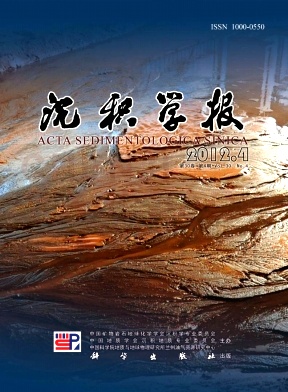Climate Variations During Early to MidHolocene in Huangqihai Lake in Northern China Based on the Lake Deposit Analysis
- Publish Date: 2012-08-10
-
Key words:
- Huangqihai Lake /
- Holocene great lake period /
- HAc leaching /
- Sr/Ca /
- Mn/Li /
Abstract: Climate change in the north margin of the East Monsoon area is sensitive to the intensity of summer monsoon, so this zone is a key region of the past climate research, where changes of the water levels of the closed lakes and areas of lakes are the important indicators of climate change. Lake sediments are valuable archives of past climates providing a detailed regionally climatic record of variations. Previous results for Holocene climate change show some discrepancies. Some researchers reported that there was a cold and dry climate state with low lake level stands during the Early Holocene(11.0~8.0 kaBP), and the climate in the Mid Holocene(8.0~5.0 kaBP), however, was warm and wet (Holocene Optimum) with high lake level stands. But, in recent years, new developed records indicate a mid Holocene drought existed in the East Asian monsoon marginal area. This paper presents a new record from Huangqihai Lake to address the pattern of Holocene climate change. Huangqihai Lake (40°41′41°43′N, 112°49′113°40′E), a closedbasin lake in Inner Mongolia of China, lies at the northern limit of the East Asian summer monsoon and in the central part of Asian Winter Monsoon. Thus, its lacustrine sediment sensitively recorded the changes of the monsoon system. The catchment basin consists of metamorphic pyrogenic rock, Tertiary basalt and Quaternary clastic sediments. Multilevel sand ridges and lacustrine sediment were exposed in the present lake shore plain, which are ideal materials of recording lake evolution. Section H6 (N40°50′11″, E113°23′8″) at the front margin of the first lake terrace of Huangqihai Lake was exposed due to the stream downcut of the Bataigou River.The sedimentary stratigraphy were composed of lacustrine and fluvial deposits. Based on OSL chronology, the grain size data and the elements analysis ,we concluded that Huangqihai Lake maintained a high lake level state during early and middle Holocene(ca.11.4±1.1~6.7±0.7kaBP). This high lake level period can be divided into three phases as follows. At the first phase(11.4±1.1~9.3±0.9 kaBP) , proportions of clay and silt show a gradually increase dominated by the silt fraction, contrary to the sand fraction, and high contents of chemistry elements; which indicate that the lake experienced the high lake level and wet climate was in favor of chemical weathering activity at that time. At the second phase(9.3±0.9~7.7±0.7kaBP) , the proportions of silt and clay began to decrease and the sand fraction was increasing. The lake salinity had been rising and the contents of chemistry elements had been falling. these showed that the lake level began to decline, and the climate became drying, and the chemical weathering appeared weakenning for a dry climate state. At the third phase(7.7±0.7kaBP~6.7±0.7kaBP) , corresponding to the end period of Maximum lake level, the dramatically fluctuation of proxies shown the characteristics of largely oscillation. Meanwhile, preliminary studies about element ratio of Mn/Li suggested that this ratio could be regarded as a proxy of chemical weathering in catchment.
| Citation: | Climate Variations During Early to MidHolocene in Huangqihai Lake in Northern China Based on the Lake Deposit Analysis[J]. Acta Sedimentologica Sinica, 2012, 30(4): 731-738. |






 DownLoad:
DownLoad: